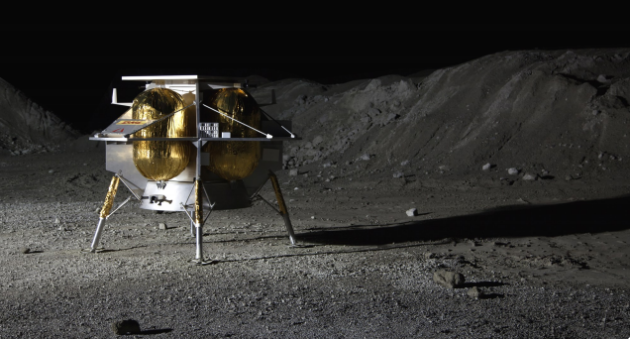
In two years, it will be the 50th anniversary of the historic Apollo 11 moon landing, and Astrobotic Technology wants to celebrate by going back — this time sending their robotic Peregrine lunar lander.
The former Google Lunar XPRIZE contender today announced a deal with United Launch Alliance for launching the lander and up to 77 pounds (35 kilograms) of payload to the moon on an Atlas 5 rocket in 2019.
Pittsburgh-based Astrobotic plans to serve commercial space companies, universities, nonprofit organizations and the government by deploying payloads into orbit before the lander’s descent, setting them loose from the lander on the surface of the moon, or letting them hitch a ride on a rover.
The first two options will cost $1.2 million per kilogram (2.2 pounds). The rover ride raises the cost to $2 million per kilogram, according to the company’s payload user guide. So far, Astrobotic has secured 11 deals from six international partnerships for the inaugural launch.
For those not looking to shell out millions, Astrobotic is also selling DHL MoonBox kits for as low as $460 to send keepsakes such as rings and scout badges. Don’t try to send your loved ones’ cremated remains, though — you’ll have to go through Astrobotics’ partner, Elysium, for that.
In addition to United Launch Alliance (a Boeing-Lockheed Martin joint venture) and Elysium, Astrobotics also has partnered with NASA through its Lunar Catalyst program; with Orbital ATK for the lander’s propellant tank; and with Airbus Defense and Space, which helped with the technical design.
Tory Bruno, CEO and president of ULA, said he’s thrilled that his company was chosen for the launch, because he believes that the moon is the next great frontier.
“Enabling technologies like those from Astrobotic will allow people to live and work in the space between here and the moon, and take advantage of all those resources in a way that is sustainable,” he said in a statement.

The moon is certainly not a new blip on Bruno’s radar. He gave a speech at the 2017 Space Symposium and on Facebook Live promoting the idea of Cislunar-1000, ULA’s mission architecture for a sustainable space economy.
The plan calls for building habitats and manufacturing facilities within the next five years. Within the next 30 years, ULA foresees mining asteroids and raising the moon’s population to 1,000 inhabitants.



